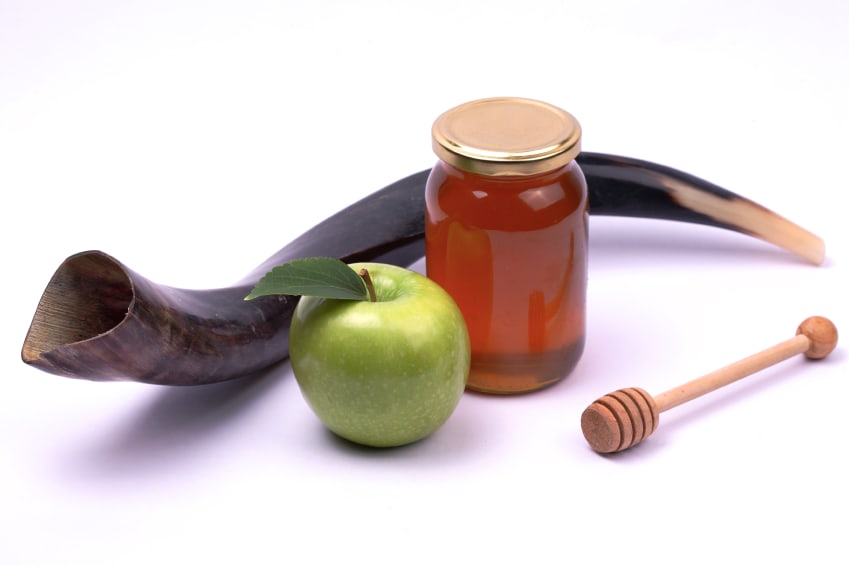Most shofarot are made from a ram’s horn. However, an increasing number of exotic shofarot are available from species such as the kudu, the gemsbok and the ibex. While some of these “alternative” shofarot are quite popular, there are serious halachic concerns regarding their acceptability.
The most well-known “alternative shofar” is made from the horn of a kudu antelope. Instantly recognizable by their great length (they are usually thirty- to forty called “Yemenite shofarot.” Due to their magnificent appearance, they are available from almost every shofar supplier.
One might think that using such a spectacular-looking shofar would be a hiddur mitzvah, performing a mitzvah in the most beautiful way. However, this is not the case. According to Chazal, the best way to perform the mitzvah is to use a ram’s horn, which is reminiscent of Akeidat Yitzchak, when Avraham sacrificed a ram in place of his son, Yitzchak.
The gemsbok shofar is made from the horn of the southern African oryx, a type of antelope that is often referred to by its Afrikaans name: gemsbok. Its horns long, straight, ridged along half their length and deep brown or black in color. They make for novel and striking shofarot.
Yet gemsbok shofarot are halachically problematic for two reasons.Firstly, it is preferable to have a bent shofar in order to symbolize that one should be bent in contrition on the Yamim Noraim, the Days of Awe. While this requirement is not mandatory (were one to blow with a straight shofar, he would have fulfilled the mitzvah), if one has a choice between using a straight or a curved shofar, one is obligated to use the latter.
Secondly, according to Rabbi Sa’adiah Gaon and others, the oryx, from which the gemsbok shofar is made, is the “re’eim” mentioned in the Torah. This relates to a discussion in the Talmud in which several reasons are given as to why a cow’s horn may not be used as a shofar. The most famous of these is that it is reminiscent of the Golden Calf. But the primary reason given is that a cow’s horn is termed a keren, which literally means “horn,” but which designates it in a different category than a shofar. In the same verse where the Torah refers to a cow’s horn as a keren, it compares it to the keren of a re’eim. We learn from this that just as the horn of a cow does not qualify as a shofar, neither does tht of a re’eim. It follows then that if the oryx is the re’eim, as many propose, its horn cannot be used as a shofar. While we cannot determine the identity of the re’eim with any certainty—some propose that the re’eim is the extinct ancestor of cattle known as the aurochs—the possibility that it is the oryx is enough of a reason not to use a gemsbok shofar.
Even a shofar made of a ram’s horn is no simple matter. An animal’s horn is made of a bony core covered by a keratin sheath. To make it into a shofar, the bony core is removed, the tip of the sheath is sawn off and a hole is drilled into the hollow interior of the sheath. But from the sawn-off tip to the hollow interior i which, in a curved horn, raises a problem; it is physically impossible to drill a curved hole. Shofar manufacturers solve this problem by heating the horn so that it can be partially straightened and thereby easier to drill a hole.
1. Cattle horn shofar (nonkosher), 2. Kudu shofar, 3. Ibex shofar, 4. Aoudad sheep shofar, 5. Water buffalo shofar (questionable if kosher), 6. Partially-straightened ram’s horn shofar, 7. Fully-twisted ram’s horn shofar, 8. Blackbuck shofar, 9. Pronghorn shofar. Most animal horns are hollow and can theoretically be made into shofarot. (Although some are pasul, disqualified, such as that of a cow.) Horns that are not hollow may not be used as shofarot, even if they are drilled through. Antlers, the branched horns of deer, may therefore not be used as shofarot since they are not hollow. Although the horns of pronghorns superficially resemble deer antlers, they are, in fact, hollow and therefore kosher. However, it is preferable not to use the pronghorn shofar because it is not curved., 10. Gemsbok shofar
However, the late Yemenite authority Rabbi Yosef Kapach writes that partially straightening the horn in this way is a problem halachically. The Mishnah states that one should use the bent horn of a ram rather than the “straight” horn of an ibex. But the horn of the ibex—the wild goat found in Ein Gedi—is far from straight. Many therefore explain that what the Mishnah means is that the ibex horn is relatively straight; merely curved along one axis, rather than twisted in a corkscrew shape like a ram’s horn. Yet by the time a ram’s horn has been partially straightened for drilling, it is often no more bent than the horn of an ibex.
Rabbi Kapach therefore rules that one should use a ram’s horn shofar that has not been straightened at all. Such a shofar can only be made out of a very large horn, in which one can saw off a generous amount from the tip in order to minimize the length of the hole to be drilled. Such shofarot command extremely high prices. While not all halachic authorities agree with Rabbi Kapach’s arguments, they concur that it is desirable to use such a shofar, if possible. Others maintain large ram’s horn is not necessary since most shofarot made of ram’s horns are sufficiently twisted and are easily differentiated from an ibex horn.
For more OU Holiday Content, please visit the Pearl & Harold Jacobs Holiday Resource Center
The words of this author reflect his/her own opinions and do not necessarily represent the official position of the Orthodox Union.


